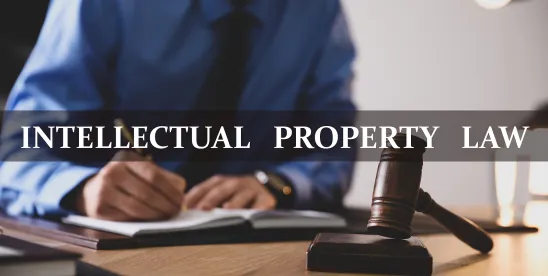Qualcomm Incorporated v. Apple Inc., No. 23-1208 (Fed. Cir. 2025)—On April 23, 2025, the Federal Circuit reversed the Patent Trial and Appeal Board’s finding that claims of Qualcomm’s U.S. Patent No. 8,063,674 (“the ’674 Patent”) are unpatentable as being obvious over the prior art.
Background
In 2018, Apple filed two IPR petitions each directed to different claims of the ’674 Patent. The IPR petitions included a table listing the grounds for the IPR challenge and the basis of each ground, with the basis for Ground 2 being “§103: Applicants [sic] Admitted Prior Art (AAPA) in view of Majcherczak.” The AAPA included a circuit diagram that was labeled as “PRIOR ART” in the ’674 Patent. In January 2020, the Board issued a consolidated final written decision finding the challenged claims of the ’674 Patent unpatentable under Ground 2.
Qualcomm appealed and argued that Ground 2 violated 35 U.S.C. § 311(b) because under § 311(b) only “prior art consisting of patents or printed publications” may form the basis for a petitioner’s request to cancel claims and that AAPA did not qualify as a patent or printed publication.
In February 2022, the Federal Circuit found that the Board “incorrectly interpreted § 311(b)’s ‘prior art consisting of patents or printed publications’ to encompass AAPA contained in the challenged patent.” However, the Federal Circuit clarified that “the use of AAPA can be permissible in an [IPR].” The Federal Circuit vacated the Board’s final written decision and remanded for the determination of “whether AAPA improperly formed the ‘basis’ of Apple’s challenge.”
In June 2022, the USPTO issued “Updated Guidance on the Treatment of Statements of the Applicant in the Challenged Patent in [IPRs] Under § 311(b)” that stated under § 311(b), if an IPR petition “relies on admissions in combination with reliance on one or more prior art patents or printed publications, those admissions do not form ‘the basis’ of the ground.” Relying on this Updated Guidance, the Board determined that Apple’s use of AAPA in Ground 2 did not violate § 311(b) because it relied on AAPA “in combination” with a prior art patent (i.e., Majcherczak). The Board rejected Qualcomm’s argument that Apple “conceded that AAPA forms the basis of the Ground 2 challenge” by expressly stating the “Basis” of Ground 2 was “[AAPA] in view of Majcherczak,” because per the Federal Circuit in Qualcomm’s appeal, AAPA can be relied on without violating § 311(b), so the Board determined that Apple’s express statements are “not determinative as to what the ground is based on.” Accordingly, the Board decided on remand that the challenged claims of the ’674 Patent are unpatentable as obvious under Ground 2.
Qualcomm again timely appealed the Board’s determination of unpatentability.
Issues
The primary issues on appeal were:
- Whether under § 314(d), a petitioner’s compliance with § 311(b) is reviewable by the Federal Circuit due to institution decisions being nonappealable?
- Whether the Board misinterpreted § 311(b)?
- Whether the Board erred in determining that Ground 2 complied with § 311(b)?
Holdings and Reasoning
1. Under § 314(d), a petitioner’s compliance with § 311(b) is reviewable by the Federal Circuit.
Apple argued that Qualcomm’s argument regarding non-compliance with § 311(b) due to “the basis” of Ground 2 relying on AAPA was “not permissible” under § 314(d), because Qualcomm’s argument effectively was a challenge of the decision to institute the IPRs.
The Federal Circuit held that Qualcomm’s appeal is not barred from review under 35 U.S.C. § 314(d), which states: “The determination by the Director whether to institute an [IPR] under this section shall be final and nonappealable.”
The Federal Circuit rejected Apple’s argument because “Qualcomm’s challenge does not pertain to the Board’s determination about a run-of-the-mill statutory provision of a procedural nature regarding the threshold question whether to institute an IPR. Rather, as in [SAS Inst., Inc. v. Iancu, 584 U.S. 357 (2018)], Qualcomm’s appeal presents a question about the manner in which the agency’s review proceeds once instituted.”
2. The Board misinterpreted § 311(b).
The Federal Circuit held that “the Board’s interpretation of § 311(b) contravened the plain meaning of the statute.”
In Qualcomm’s previous appeal, the Federal Circuit found that “AAPA is not a prior art patent or printed publication.” Thus, the Federal Circuit reasoned that “because [under § 311(b)] the basis can only include prior art consisting of patents or printed publications . . . it follows that the plain meaning of § 311(b) does not permit the basis to include AAPA.” The Board interpreted § 311(b) to provide that AAPA does “not form ‘the basis’ of the ground” where “an IPR petition relies on admissions in combination with reliance on one or more prior art patents or printed publications.” The Federal Circuit rejected the Board’s interpretation because “[u]nder the plain meaning of § 311(b), the question is whether a petitioner has used AAPA as the basis, or part of the basis, of a ground—not whether the request relies on AAPA in combination with prior patents or printed publications.”
3. The Board erred in determining that Ground 2 complied with § 311(b).
The Federal Circuit agreed with Qualcomm that “the Board misapplied § 311(b) to conclude that Ground 2 complies with the statute.” The Federal Circuit found that “the Board erred when it applied its incorrect statutory interpretation to conclude that ‘it is the prior art patents—Majcherczak and, when used, Matthews—that form the basis of the challenge and AAPA is simply being used to provide missing limitations,’ and not as the basis of Ground 2 in violation of § 311(b).”
In addition, the Federal Circuit agreed with Qualcomm that Apple’s IPR petitions “conceded that AAPA forms the basis of the Ground 2 challenge” because “[e]ach petition opened with a table that prominently labeled the ‘Basis’ of Ground 2 as ‘AAPA in view of Majcherczak’ . . . .” The Federal Circuit held that “[r]eliance on AAPA in combination with prior art patents or printed publications is not dispositive of whether AAPA is included in the basis of a ground. But what is dispositive are express statements—as in Apple’s petitions—that AAPA is in the ‘Basis’ of a ground.”
The Federal Circuit noted that due to the “unequivocal use of ‘basis’ in Apple’s petitions, we need not consider whether, in substance, Ground 2 included AAPA in its basis.” The Federal Circuit further left open however the question of how much reliance on AAPA may be permitted in an IPR and that “[w]e expect future cases may require the PTO and this court to consider the substance of a petition to determine compliance with § 311(b).”



 />i
/>i
